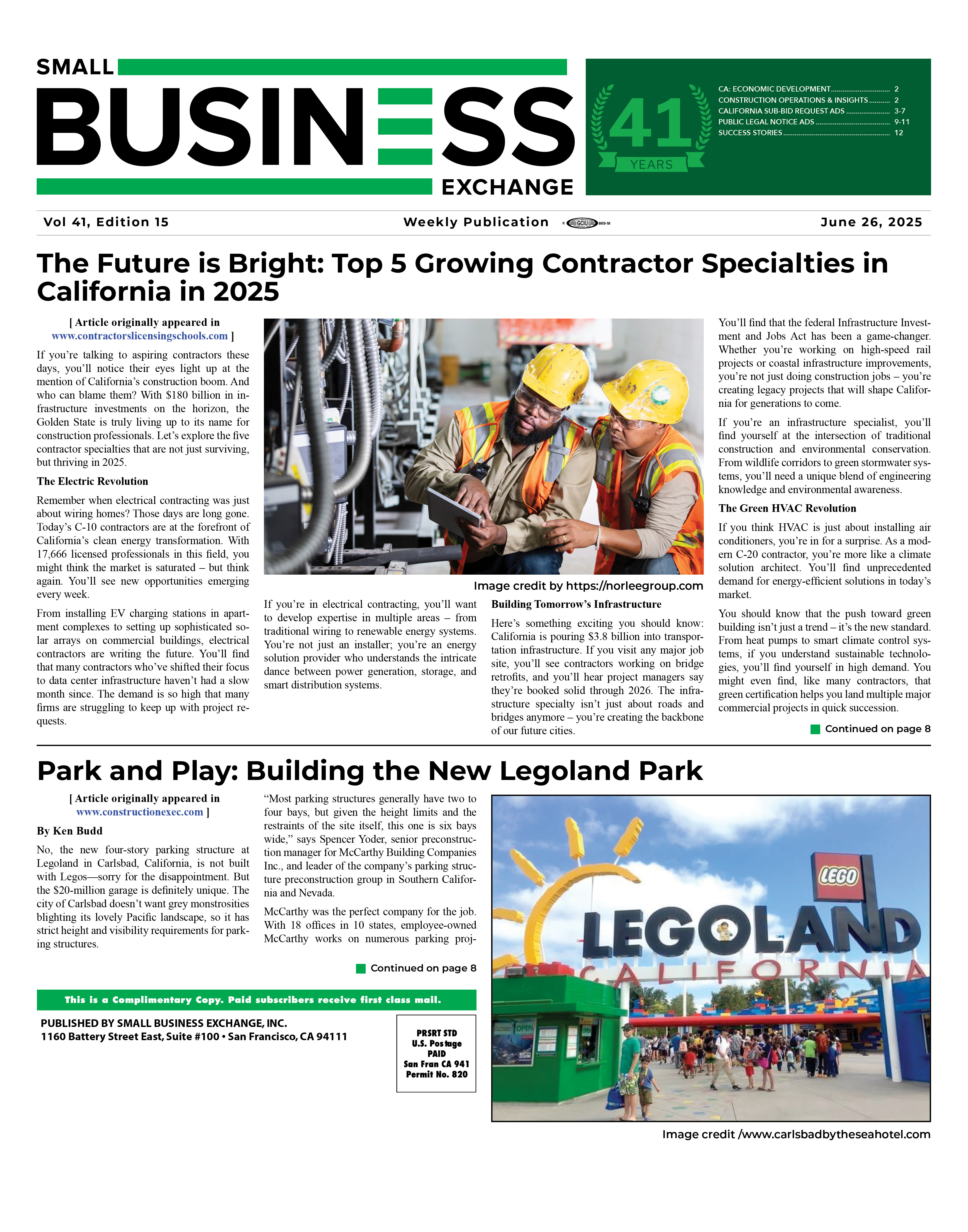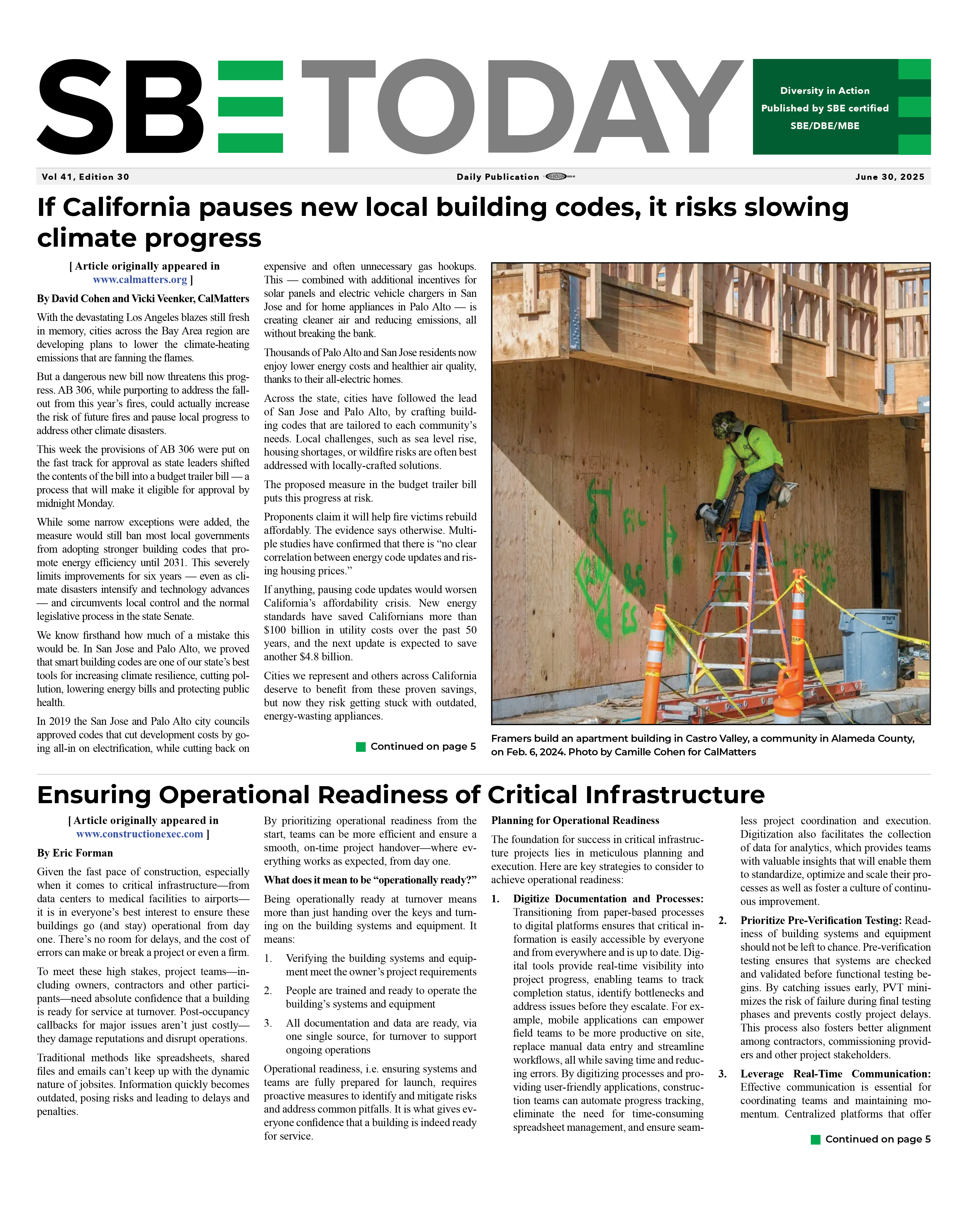|
|
5 tips to get subcontractors to fill out prequalification forms
09/12/2019
[ Article was originally posted on blog.buildingconnected.com ]
By Justin Levine,
Getting subcontractors to fill out qualification forms can be a tricky task. Despite their best efforts, general contractors may struggle to get responses, or they receive them with incomplete or inadequate data to complete the assessment. With defaults on the rise, it’s important that you get accurate data so you can make informed decisions and mitigate risk.
Picking the right subcontractor is crucial to keeping a project on track and on budget, but what if your prequalification form is creating a bottleneck? Long, overly complicated forms and questions that don’t relate to the project can cause subcontractors to get stuck, decrease your response rate, and delay bids.
To help, here are five subcontractor management best practices that general contractors can implement to get subcontractors to fill out prequalification forms in a timely, accurate manner.
Invest in your relationships
It’s said all the time, but it needs to be reiterated: construction is a relationship-based industry. Building strong relationships takes effort from subcontractors, general contractors, and even owners. Prequalifying subcontractors can feel transactional, especially when you’re asking for sensitive financial information. Having empathy for your subcontractors and the amount of prequalification requests they get is an important start. That’s why prequalification technology is a must for choosing subcontractors today. A stronger relationship with a subcontractor means they’re more likely to submit a response.
The construction industry is adopting and implementing more and more technology, but building strong relationships still requires communication and a personal touch. Set up face-to-face meetings to descope projects with subcontractors and give them feedback throughout the prequalification process. It increases transparency and fosters long-term relationships because it starts with mutual respect and understanding.
Automate your prequalification process
Managing subcontractors and the prequalification process takes time. There are dozens of tasks involved. You have to reach out to subcontractors, educate them on the process, and get them to provide all the data you need. Traditional prequalification processes are repetitive and involve collecting and entering the same information over and over again. Any time you have repetitive processes, there is an opportunity for automation to increase efficiency and streamline operations.
There are email automation tools such as Zapier and Boomerang that can help, but it’s still not enough. Subcontractor prequalification software takes it one step further by sending automated follow-ups, reminders, and renewals to collect up-to-date info — saving general contractors hours. Once you’ve gathered accurate information, you can receive automated risk mitigation recommendations to identify and reduce risk early in the preconstruction process.
Trim down your questionnaire
Prequalification forms should be easy and straightforward for subcontractors to fill out. If a subcontractor’s response doesn’t change whether you would work with them, it’s probably not worth asking. You want as few barriers as possible between you and your subcontractors, and part of that friction lives within the prequalification form. Using the same form for every project creates unnecessary work and complicates the process. Every project is different, so your prequalification forms should be, too.
Trim down your questionnaire and have multiple variations for different types of subcontractors and projects. Improve it even more by getting feedback from subcontractors. This will also help you evaluate if they’re a fit for that project, which can create a successful prequalification workflow. If there is a question on the form that’s holding up the prequalification process, take the time to listen and work on optimizing your forms for future subcontractors. An easier form equals more responses.
Leverage your project teams
The entire organization needs to have a risk mindset when it comes to managing subcontractors. Since project teams are on the front lines talking to subcontractors, they need to be well informed of the prequalification process and should advocate for the risk team by encouraging subcontractors to participate. Communicating the prequalification process to your project teams enables them to answer questions as they arise and fully understand the workflow of your subcontractors.
If you use a homegrown system, which is inherently unique to you, the subcontractor has to learn a new prequalification process and find their own way. They have to get used to your form, login process, and submission steps. With subcontractor prequalification software, the process is the same with all the general contractors. Subcontractors can greatly reduce the time it takes to fill out a form by being able to save safety documents, financial records, and even canned responses to frequently asked questions.
Properly onboard your subcontractors
It’s important to set subcontractors up for success before you even send them a prequalification form. Proper onboarding gives your vendors all the tools they need to start the process and answers any questions they may have along the way. With TradeTapp, you get a team dedicated to supporting your subcontractors, an implementation specialist, and many resources for both general contractors and subcontractors. By improving your prequalification response rate, you’ll be ahead of the game and well suited to mitigate risk before it’s too late.
SOURCE: https://blog.buildingconnected.com/5-tips-to-get-subcontractors-to-fill-out-qualification-forms/
Source:Ran in 03-11-2021 Newspaper
Back To News
|

SBE Northeast
Louisiana Business Journal Archive Archive
|





